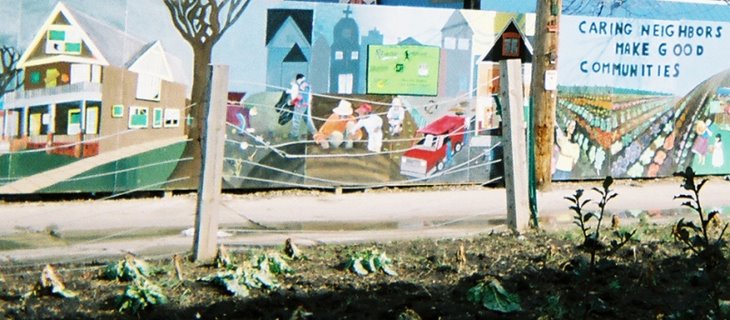To better understand the reason for Walnut Way's effort to redevelop their economy, it is important to first gain an understanding of the history of the community. Sharon Adams discussed some factors that played into the community's collapsing economy, so this is just to expand on what she mentioned and clarify any confusion.
The need for labor during World War I brought many African-Americans up north, but until 1910 there were less than 1,000 residing in the vicinity of W. Walnut Street. Though as the northern cities industrialized and the need for labor was high, over 1,000,000 African-Americans migrated north in order to escape hopelessness of sharecropping, floods, and lynch mobs. They were also seeking higher wages, steady work, and more comfortable living conditions. Despite this migration, Milwaukee's African-American population had only reached 1.5% by 1940. Most settled down in Chicago, but as it became too crowded and transportation to Milwaukee became more accessible, the black population continued to grow. By 1950, it had reached 3.4% and by 1960 it increased to 8.4%, becoming a major cause for the total population increase in the city.
To the southern migrants, Milwaukee was thought of as a land of opportunity, actually referred to as "a land of new frontier" by a report on black employment. This idea was created by friends and relatives who influenced other men to migrate north so they could direct them to employment opportunities. These migrants predominantly worked in factories and foundries. These black proletarians were industrial workers looking to improve their economic position and escape hostility in the south, but racism didn't allow them with much upward social mobility. And as the African-American population increased, segregation increased at an even faster rate.
In the 1950s, the socioeconomic position of African-Americans slowly improved. They began to earn higher incomes and some achieved middle class representation.
Immigrants, but especially African-American migrants arriving in the city moved into the oldest parts of the city because inexpensive housing was available. Also, other migrants who had moved there were willing to help newcomers out in a new environment and many thought they would only live in the area temporarily until they found a better place. This older area of the city is referred to as the "inner core", or for lack of better words, the "depressed" part of the inner city which included both slums and good residential areas. It is also characterized by low income, high unemployment, and other social problems. As for the houses, they were older, deteriorating, and thus less desirable. Some were even considered "dilapidated" meaning they did not provide safe and adequate shelter. The lack of desire for these homes and the status of segregation at that time caused whites to leave the inner core. In the 1940s, the white population of the inner core area actually decreased by 6.1% while the black population in the area increased by 147.7%. The relatively low property values and taxes made living in the area seem less desirable and encouraged low income ownership. Conditions though were not awful, the black community had a wide range of housing and people of diverse socioeconomic status.
Historically, as we think about immigrants in our country's past, newcomers are forced to work the harder, dirtier jobs. In this case, African-Americans were working the harder industrial jobs such as jobs in the construction industry or the iron and steel industry. They were barely represented in occupations such as printing and publishing, trucking and warehousing, banking, gas and electric, or telecommunications. In 1960, 4.7% of employed men were black.
The late arrival of African-Americans in the job market didn't leave them with much choice for desirable, skillful jobs and made it difficult for them to join unions. Also, the jobs that they were traditionally excluded from left them unable to meet the job qualifications often needed. Inexperience in the workplace forced them to do the unskilled jobs, but many industrial businesses at this time were replacing workers with machines during the rapid growth of automation. Beyond all of these issues, population and housing patterns also were changed by the clearance of homes and businesses for urban renewal/redevelopment and a proposed expressway. The unemployment rate amongst African-Americans peaked in the 1950s.
A study done in 1959 illustrated that nonwhite families received only 72.9% as much income as all families in the city. Employed wives were more common in nonwhite families than in white ones, however there were more nonwhite families who didn't have a wage earner at all. Overall, blacks were underrepresented in Milwaukee's employment pattern.
Subscribe to:
Post Comments (Atom)

No comments:
Post a Comment